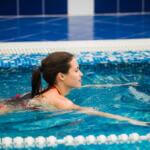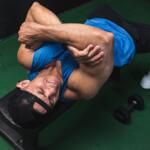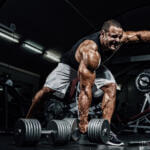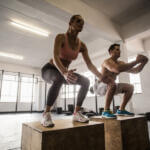Have you ever been stuck in a frozen parking lot? The wheels are spinning like crazy on the frozen surface, but the car won’t move an inch no matter how hard you press on the gas. Can you say the same about your arm workouts?
Are you doing arm workouts day after day, and there is no change in the size and the strength? What to do to get bigger arms then? Change your workout program! Don’t look for excuses like, for example, that you are skinny naturally or that you are not built for the gym.
All muscles grow bigger and stronger if they are properly stimulated. The only thing you should blame for not getting the desired results is your program and not you.
To get bigger arms in no time or at least much faster than you think, you have to implement the following principle: change the way you are working out, even a little bit, and you will start gaining muscle mass.

Scientific Tips For Bigger Arm Muscle Mass
Muscles grow when they are bombarded by anabolic hormones, amino acids, calories, and when they are under tension, after which there is rest. If there is even one of those elements missing, the muscle growth stops.
Muscle tension is one of the most important elements of muscle growth; more tension means better growth. Muscle growth depends on muscle tension and its duration. Gym workouts split muscle fiber, which causes the growth of the muscle during the recovery period.
Muscles exposed to stress influence the growth of so-called satellite cells, which influence on the genetic material within the body cells to create new muscle tissue. Muscles on your arms grow when you overload them. Also, muscles get used to added stress very quickly.
If you do not train hard enough, muscles adapt, and they do not need to create new muscle tissue. On the other hand, muscles will grow bigger if they are always under stress more than before and if you rest enough for them to recover, and if you have a proper diet.
Muscle Overload Methods That Work
Beginners should do three or more sets of twelve repetitions in exercises for biceps, triceps, and forearms. Chose the weight that is light enough so you can do the sets correctly but heavy enough to cause the stress on the muscles.
Beginners can progress if they gradually increase the number of repetitions and the weight that they are lifting. On every new training, try to lift a heavier weight or to do more repetitions than you have done on the one before that.
Experts in weight lifting use various methods to overload the muscles. The goal of these methods is to get the muscle constantly in the state of stress and to make the stress itself vary, so the muscle does not have the chance to adapt to it or stop growing.
Three methods are shown to be very successful – supersets, a combination of unilateral and bilateral training, and sets with decreasing weights.

Supersets
Supersets are based on activating one muscle group, after which you immediately transfer to activating another muscle group without any rest period in between since while you are doing the other muscle group, the first muscle group has time to rest.
As we already mentioned, the muscle growth depends on high muscle tension and the duration of it. During supersets targeted muscle groups as, for example, biceps are put under extreme stress. Then you transfer to another muscle group such as triceps, and after a short period, you go back to biceps.
Opposed to other training methods that are based on training a single muscle group here, you first activate one group of muscles and then let it rest while you are activating another muscle group. By doing this, you activate several muscle groups in one training.
Supersets satisfy the most critical stimulants for muscle growth – great muscle tension of long duration. By the end of this monstrous training arms muscles are activated to their maximum.
Strenuous training not only influences muscle growth, but it also burns calories during and after the training itself.
Unilateral And Bilateral Training
You can activate muscles unilaterally when only the muscles on one side of the body are activated and bilaterally when the muscles on both sides of the body are activated.
Unilateral training helps you isolate the muscles much better. This type of exercise increases the blood flow to the muscle much better than bilateral training, which leads to muscle growth. Also, unilateral training leads to better muscle symmetry.
In unilateral training, the engagement of the muscle is greater, which means that the overall weight you can lift when one limb is working on its own is bigger than what you can lift when both limbs are working at the same time.
An example of this is the dumbbell curl. The weight you can lift with one hand is bigger than the weight you can lift with both arms at the same time. Unilateral training also increases the strength of the side of your body that is not activated while doing the exercise.
This is not a well-known fact, but you should know that when you are doing a dumbbell curl with the right hand, the left hand is also under the influence of the exercise, although you are not doing anything with it.
A combination of unilateral and bilateral workouts creates different types of stress on the muscles, and by doing that, it leads to quicker muscle growth.
Sets With Decreasing Weights
When you are working out with weights, and you reach the point where you can’t lift a certain weight any longer, decrease the weight immediately and continue working out with a lighter weight until you again reach the level of exhaustion. Then again, reduce the weight you are lifting and continue.
While doing this series, arm muscles are working to their maximum, and then you raise muscle overload to an entirely new level.
These kinds of sets are not for the weak ones, so do not include them in your training program if you want your arms to look the same as they look now.









